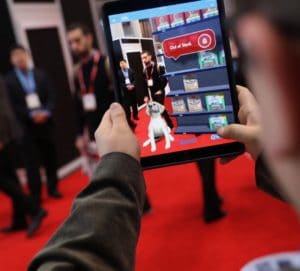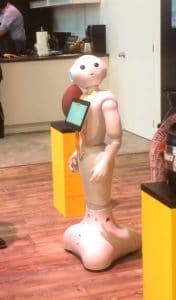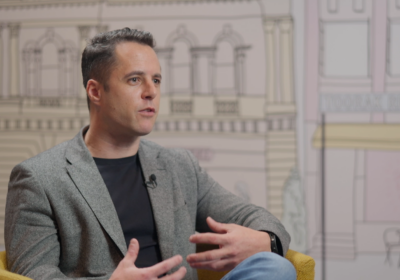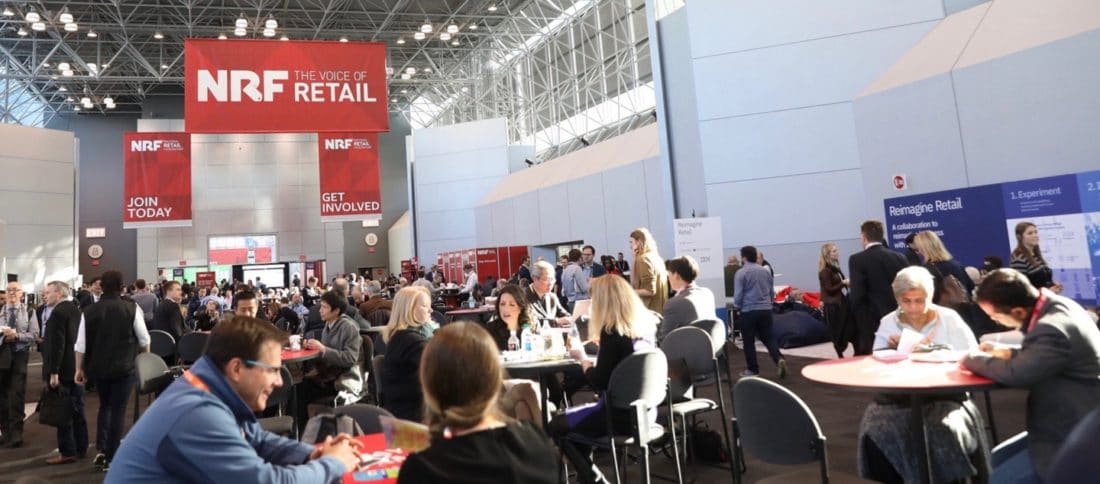Reports of a retail apocalypse are greatly exaggerated, but “retail” will mean something different going forward than it has in the past, said merchants at the industry’s annual conclave. Retail brands must switch gears from building store traffic to building up the store experience in order to adapt, said industry leaders.
Stores are undergoing a transformation that is turning shopping into an experience modeled more closely after online shopping and greatly enabled by many of the same tools—machine learning, robotics and others—that power e-commerce. This evolution, chiefly driven by “digital native” retailers, has turned the dynamics of retail on their head, said speakers at the National Retail Federation’s Big Show. The event gathered 37,000 retailers from around the world.
“We have to look fairly broadly across the landscape in the marketplace and find a new way to connect with the consumer,” said Rod Sides, vice chairman, US retail practice leader at Deloitte. He noted that data shows digital commerce impacts over $2.1 trillion of U.S. retail activity. “We have to embrace that,” he said.

The model for how consumers interact is changing dramatically, said Sides, noting the average consumer checks their mobile phone 46 times per day, on average, or four times an hour in an 18-hour day.
“If we’re not there, if we’re not interacting with them, we’re losing a huge opportunity,” said Sides. “The playbook we had—we have to toss out.”
Marketers have been focused on driving traffic to stores since the beginning of mass retail, but that will have to change, said speakers. The “last mile” of retail, leading to purchase, is where resources will have to be allocated now.
“We really believe physical retail is how consumers want to shop, but the challenge is the physical experience has gone down, down, down,” said Joe Jensen, VP and general manager of the retail solutions division at Intel Corp. “A reset needs to happen.”
Meanwhile, a new class of retailer is emerging, “digital natives” that started online—both executives and stores such as Warby Parker, Bonobos and Rent the Runway—and are launching brick-and-mortar stores unburdened by legacy systems and armed with new technology. Some use sensors to see how staff and customers move around the store and then deep learning to study data and understand how to place product to maximize the interaction in-store.
A number of vendors on the trade show floor were showing technologies ranging from robots that cruised the aisles to speed up inventory and keep shelves stocked, to radio frequency identification tag (RFID) systems meant to track items on the store floor and help associates locate that misplaced item or find the right size or color for a customer. Several vendors were using RFID to enable store pickup of online items, self-checkout and other functions to ease customers out the door with purchases. Many others were using facial recognition to better identify and segment shoppers in-store and build insights on store traffic.
“You take your first Uber ride and you ask: ‘Why doesn’t shopping work this way?’” asked Scott Friend, managing director of Bain Ventures. The private equity firm has made investments in several technology companies trying to revamp the retail experience.

“There is no longer a split between the physical world and the digital world, there’s just one world,” said Martin Barthel, head of global retail and e-commerce, Facebook. The biggest challenge retail is facing is bringing together the online and the offline world, he said. Retailers need to reinvent their business to be mobile-first, said Barthel, noting that 56% of store transactions are influenced by mobile.
“This is a new world where everything starts with mobile,” said Jennifer Bailey, VP of Internet Services, Apple Pay. Already mobile shopping makes up 25% of all e-commerce and is growing four times faster than desktop e-commerce and 10 times faster than traditional retail; in China over 80% of e-commerce is mobile already, she noted.
“The consumer is moving so fast we don’t want to get caught playing catch-up,” said Chris McCann, president and CEO of 1-800-Flowers.
An existential crisis
But this doesn’t mean the end of retail as we know it, warned the Big Show speakers. According to a panel of economists, holiday retail sales were still strong, the economy is stable and many real-world retailers held their own over the season, in spite of fears of a “disintermediation” by online commerce, said Brian Nagle managing director and senior analyst at Oppenheimer.
“Maybe Amazon is not going to put everyone out of business right away,” he said.

Traditional retailers are responding, including PetSmart, which last year acquired e-tailer Chewy.com, and Wal-Mart, which purchased packaged-goods e-tailer Jet and fashion brand Bonobos and has been integrating their practices into its own operations, noted speakers. Other companies are adapting deep learning tools made available by Google and Apple as open-sourced APIs to improve their customer insights and personalization.
Retail disruption has been a topic for the last five years, but it can be addressed by brands that leverage their customer data to remake the retail experience, said Michelle Peluso, CMO of IBM. Data, most speakers said, is the lifeblood of all these applications. Digital retailers have benefitted from tracking customers online, but legacy merchants also have large stores of unstructured data that could be put to use with some sorting help from artificial intelligence.
“We believe now is the time for the rise of the incumbent,” she said. “Who owns that data, the 80% of data that is not searchable on the Internet? You.”
The acquisition of Whole Foods by Amazon was a wake-up call to retailers, said Alex Taussig, partner at Lightspeed Ventures. The VC firm that has invested in a number of tech companies including Snap.
“There’s a real existential threat to wake up to,” he said. “The Retail Apocalypse is not evenly distributed” and some store formats will eventually disappear while others will be enhanced by digital features, he explained.
“Apocalypse” is too harsh a word to describe the current environment, he said. He tagged it instead as a “replatforming” of retail: “This is all rethinking what it means to have a store.”





Join the conversation